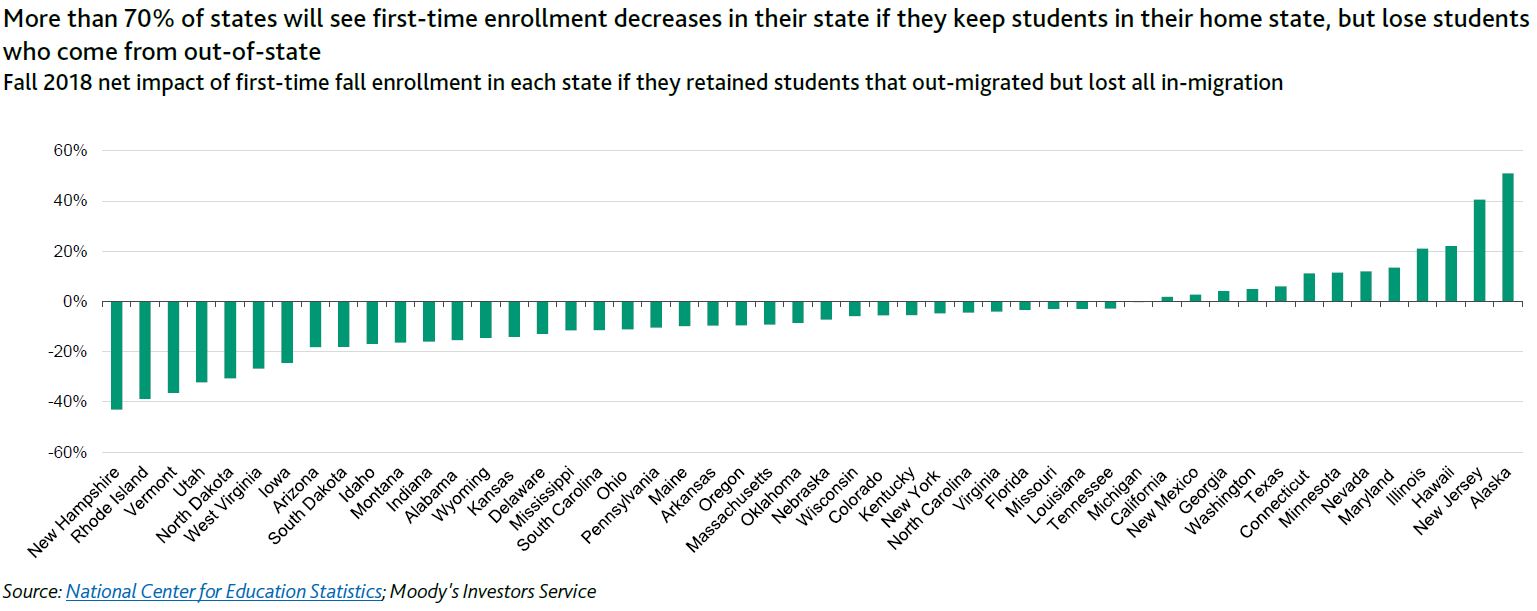You have /5 articles left.
Sign up for a free account or log in.
A new report from Moody’s Investors Service examines which states are likely to see enrollment rise or fall in the event the coronavirus pandemic prompts students to stay closer to home than they have in recent years.
The ratings agency and other experts have theorized that heightened health and affordability concerns will cause many students to enroll in college closer to home than they otherwise would have. Moody’s used recently released National Center for Education Statistics data on first-time undergraduate enrollment, residence and migration by state to determine which states are most likely to see gains and losses come fall under such a scenario.
More than 20 percent of college students come from out of state in seven in 10 states, according to the data, from fall 2018.
New Hampshire, North Dakota, Rhode Island and Vermont all rely on out-of-state students for more than 40 percent of enrollment -- putting institutions within their borders at high risk for losses if large numbers of students do in fact decide to enroll closer to home. On the other hand, Alaska, California, New Jersey and Texas rely on nonresident students for less than 10 percent of enrollment, meaning they are less vulnerable to such a change in student behavior. At the same time, Connecticut, Hawaii, New Hampshire, New Jersey and Vermont lost over 35 percent of first-time students who reside within their borders to other states for college, meaning they’re poised to gain at least some students -- although such gains may not be enough to offset losses from out-of-state students that normally would migrate in for college.
Moody’s has previously noted that rising enrollment does not necessarily translate to increasing revenue for colleges and universities. It forecast falling net tuition and other student revenue in fall 2020 despite enrollment gains across higher education.
Different institutions could also experience disparate enrollment trends, although public universities and community colleges are generally expected to gain market share.





